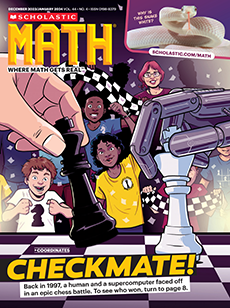Provide students with a proportional scenario that includes all four parts of the proportion. For example, tell students that for a batch of cookies, a recipe requires 3 cups of flour and 2 eggs. Making five batches of the cookies requires 15 cups of flour and 10 eggs. Show students the multiple ways they can write a proportion using these four parts, and start a discussion about how the units in each proportion help to ensure accuracy.
CCSS: 7.RP.A.2.C, *7.RP.A.2
TEKS: 6.5A, 7.4D, *6.6B
*Additional standards covered in Skill Builders.
